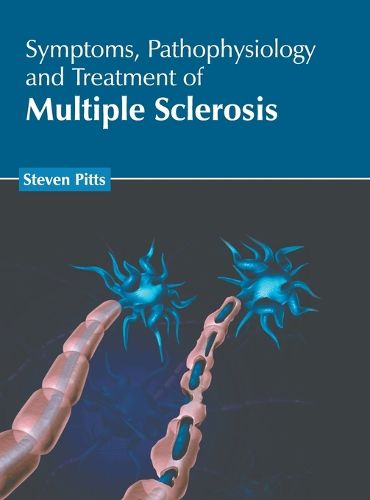Readings Newsletter
Become a Readings Member to make your shopping experience even easier.
Sign in or sign up for free!
You’re not far away from qualifying for FREE standard shipping within Australia
You’ve qualified for FREE standard shipping within Australia
The cart is loading…






Multiple sclerosis (MS) is an autoimmune disease that causes damage to nerve fibers of the central nervous system (brain and the spinal cord). It can be categorized into four types namely clinically isolated syndrome (CIS), relapsing-remitting MS (RRMS), primary progressive MS (PPMS), and secondary progressive MS (SPMS). Some common symptoms of multiple sclerosis are vision problems, muscle weakness, fatigue, changes in gait, muscle spasms, loss of balance or coordination, etc. As of now, no cure has been found for multiple sclerosis. Some treatments can slow the disease progression and help relieve the symptoms. Its treatment plans include disease-modifying therapies (DMTs), physical rehabilitation, mental health counseling, and relapse management medications. There are some preventive measures such as regular exercise, stress management, healthy food intake, etc. that can improve this condition. This book outlines the symptoms, pathophysiology, and treatments of multiple sclerosis in detail. A number of latest researches have been included to keep the readers up-to-date with the latest concepts in this area of study. This book will serve as a valuable source of reference for graduate and post graduate students of medicine.
$9.00 standard shipping within Australia
FREE standard shipping within Australia for orders over $100.00
Express & International shipping calculated at checkout
Multiple sclerosis (MS) is an autoimmune disease that causes damage to nerve fibers of the central nervous system (brain and the spinal cord). It can be categorized into four types namely clinically isolated syndrome (CIS), relapsing-remitting MS (RRMS), primary progressive MS (PPMS), and secondary progressive MS (SPMS). Some common symptoms of multiple sclerosis are vision problems, muscle weakness, fatigue, changes in gait, muscle spasms, loss of balance or coordination, etc. As of now, no cure has been found for multiple sclerosis. Some treatments can slow the disease progression and help relieve the symptoms. Its treatment plans include disease-modifying therapies (DMTs), physical rehabilitation, mental health counseling, and relapse management medications. There are some preventive measures such as regular exercise, stress management, healthy food intake, etc. that can improve this condition. This book outlines the symptoms, pathophysiology, and treatments of multiple sclerosis in detail. A number of latest researches have been included to keep the readers up-to-date with the latest concepts in this area of study. This book will serve as a valuable source of reference for graduate and post graduate students of medicine.